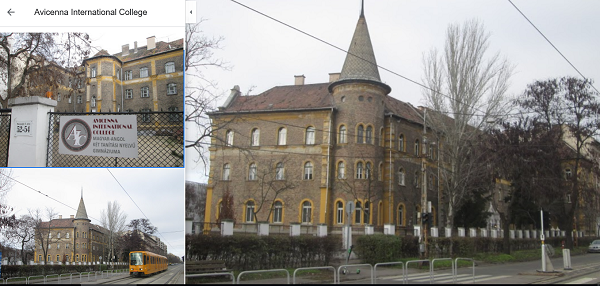
About Accommodation
Sometimes called the 'Little Paris of Middle Europe,' Budapest- the capital of Hungary, is famous for the monuments and relics that reflect its 1000-year-old culture. Budapest is thought to be one of Europe' s most beautiful cities as it houses numerous World Heritage Sites, the world's second-oldest metro line, the biggest thermal water cave system in the world, the second largest synagogue and so much more. It is also blessed with over 80 baths and geothermal springs, giving it the name 'city of spas.' When you' re done enjoying a dip in one of these many springs, you can sip on some exquisite Hungary wine and relish food that' s the result of the most refined styles of cooking in all of Europe. The breath-taking architecture tells tales of a sad past but also gives you a sense of hope and faith. This is one city where you can see how the beauty of Mother Nature as well as the talents of man, have come together to shape what now is the 5th most popular city in Europe and 25th in the whole world.
Best Time to Visit Budapest
Though the summers, which start in June and end in August, can be quite hot and uncomfortable, it’s the peak season with plenty of carnivals and festivals. Rooms get booked very early on and the rates will be hiked up. There are also occasional rains during the summer so tourists have to be prepared for that.
The spring season, which lasts from March to May, is pleasant in Budapest. The temperatures stay under 25° C and the tourists are not too many. This makes the room and flight rates much cheaper. There are also a number of festivals like Hungarian National Holiday, Budapest Spring Festival, etc.
Like the spring, the fall (September to November) is also a pleasant time to visit Budapest. The crowds of tourists would have left and the temperatures start falling before the chilly winters.
Transport in Budapest
LOCAL BUS NETWORK: A majority of the local people use the bus for their daily travel. There are more than 200 routes, and the express buses with red number plates are the ones that serve the busiest routes of the city. The regular buses have black number plates and sometimes travel on the same routes as the express buses, but the express buses have fewer stops. There are buses operating in the Buda Hills as well. Budapest also has 34 night buses that run from 11:00 PM to 4:00 AM.
TAXIS: Taxis are preferred at night when there are limited public transport options. The taxi drivers try to hike up prices so it’s safest to book in advance (companies like Budataxi, Citytaxi, Főtaxi, etc.) or have your hotel book a taxi for you. Licenses taxis will be yellow and will have a meter.
RENTAL: There are several car rental agencies in Budapest, providing both self-driven and chauffeur-driven options. Some of the major ones are Sixt, Europcar, Kayak, Budget, etc. The excellent network of bike paths in the city, make it a great place for travelling on bike. Yellow Zebra Budapest, Budapest Bike and Bikebase are some of the bike rental agencies. There are scooter rental agencies like Retro Robogó as well.
METRO: The Subway or Metro is an efficient way to travel within the city. There are four lines – M1, M2, M3 and M4. This underground network connects the suburbs with railways stations, bus stands and centrally located sights. There are yellow streetcars and trolley buses that run across the city, connecting all the major stops.
LOCAL TRAIN: HÉV also operates a suburban rail service (HÉV trains) in Budapest and to cities outside it. The ticket passes are valid only within the city limits. Tourists can try the Cogwheel railway, which is a tram-like railway with a historic charm.
TREKKING: Most of the city and the historic districts are great for walking. There are pedestrian sections in downtown Pest and the traffic is restricted on Castle Hill, so walking is the preferred way to get around these areas. The number of bikers and cycle lanes have grown in the recent years so cycling is also a great way to see the city of Budapest.
How to Reach Budapest
BY FLIGHT: The city is served by Budapest Ferenc Liszt International Airport, which is the largest airport in the Hungary. It offers international connections mainly within Europe, but also to the Middle East, to Africa and the Far East. The airport connects Budapest to international cities like Cairo, Beijing, Düsseldorf, Paris, Vienna, Munich, Doha, Zürich, Dubai, etc. The major airlines that serve the airport include British Airways, easyJet, Norwegian Air Shuttle, Qatar Airways, Ryanair, Wizz Air, etc. There are charter airlines like Travel Service Hungary and Small Planet Airlines that have services to closer cities like Hurghada, Ibiza, Palma de Mallorca, etc.
Nearest Airport: Budapest Ferenc Liszt International Airport is 16 km east-southeast of the city centre.
Safety Suggestion: Budapest experiences snowfall in the winters and sudden heavy showers in the summer. These conditions might cause a delay or cancellation in flights.
BY BUS: Budapest is a vital part of Hungary’s road network. Hence, all of the major highways pass through the city. Domestic and international buses leave from and arrive at the Népliget Bus Station. The other domestic bus stations in the city are at Stadionok in Pest, Etele tér in Buda and the Árpád híd. Volánbusz Rt. has regular passenger bus services Budapest with the following countries: Poland, Spain, Netherlands, Austria, Croatia, Belgium, Norway, Bulgaria, Lithuania, Denmark, Great Britain, France, Italy, Germany, Greece, Macedonia, Czech Republic, Serbia, Romania, Slovenia, Sweden, Slovakia, Ukraine and Switzerland.
Journey Suggestion: Though the roads and highways leading to the city are in great condition, some parts of the city experience traffic congestion problems.
BY TRAIN: Hungarian State Railways operates the Hungarian main railways. The three major railway stations in Budapest are the Western, Eastern and Southern railway stations. These railways stations operate both domestic as well as international rail services. Budapest is also one of the main stops on the Central and Eastern European route of the Orient Express.
People of Budapest
Budapest has a population of around 1,742,000 people with a constant flow of migrants. By ethnicity, the majority are Hungarians (80.8%), followed by Romani (1.1%), Germans (1.0%), Romanians (0.4%), Chinese (0.3%), 2,581 Slovaks (0.1%) and a large number (17.5%) of people not declaring their ethnicity. Budapest is a major hub for finance, banking, real estate, trade, retailing, tourism, advertising, fashion, media, arts, etc. The people have a very playful nature and they are very respectful towards women and the elderly.
Language of Budapest
Though Hungarian is spoken by almost everyone in Budapest, foreign languages are also spoken. English (31%), German (15.4%), French (3.3%) and Russian (3.2%) are the main languages spoken apart from Hungarian.
History of Budapest
Traces have been found proving there were settlements dating as far back as the Old Stone Age. People lived on either side of the Danube, which is now where Budapest stands. It was then occupied by Romans, Ottomans and Turks all leaving behind relics, houses, baths and roadways. The 19th century saw the Hungarian struggle for independence and modernisation. After the end of World War II, Budapest was greatly destroyed by the air raids. For another year, it suffered again during the Battle of Budapest. From the 1960s to the 1980s, the city went under major repair and reconstruction. The metro lines were opened during this time and the Buda Castle found a place in the UNESCO World Heritage Sites. The population grew and the twentieth century saw many political changes. Budapest is now home to nearly two million people that include world leaders in science, film and innovation.
Culture of Budapest
Budapest is a vital centre for dance, music, film, visual arts and theatre. Even the government funds these arts with sufficient financial resources. The city is dotted with a number of museums and galleries that have exhibitions and show cases all year round. The libraries also store unique collections of books and relics from a time before books were printed. There are a number of theatres, concert halls and opera houses as well. Budapest hosts seven annual festivals like the Sziget Festival, Budapest Spring Festival, The Budapest Autumn Festival, Budapest Wine Festival, Budapest Pálinka Festival and Budapest Pride.
Budapest Weather
Budapest has an oceanic and humid continental climate with chilly winters and warm summers. The city has four main seasons. The summer (June to August) season is hot with an average temperature of 20 °C. July is the hottest month with temperatures climbing over 27 °C. June receives the most rainfall. The autumn (September to November) season is pleasant with temperatures that fluctuate between 16 °C to 18 °C. Winters (December to February) are cold with an average low of -2 °C and not more than two hours of sunshine a day. There is usually light snowfall during the winters. The springtime (March to May) is perfect for sightseeing as the temperature stays between average lows of 7 °C to average highs of 18 °C.
Budapest Geography
Budapest lies at the centre of the Carpathian Basin, on an ancient route that links the Great Plain with the hills of Transdanubia. It is 545 km south of Warsaw, 1,122 km north of Athens, 788 km north-east of Milan, and 443 km south-east of Prague. Budapest has two sides, Buda and Pest, which stretch along the banks of the River Danube, demonstrating the two different characters of the city. The suburban Buda area with its historic castle district offers medieval roads and houses, caves, museums and some Roman ruins. The lively Pest side houses riverside promenades, bookstores, flea markets, antique stores, the largest parliament building in Europe and café houses.
(Source: https://www.yatra.com/international-tourism/budapest-travel-guide)
SCHENGEN VISA
A Schengen Visa is the document issued for visiting/ traveling in and within the Schengen Area. The Schengen Area is comprised of 26 countries that have agreed to allow free movement of their citizens within this area as a single country. Schengen visas are issued by the following countries: Austria, Belgium, Czech Republic, Denmark, Estonia, Finland, France, Germany, Greece, Hungary, Iceland, Italy, Latvia, Lithuania, Luxembourg, Malta, Netherlands, Norway, Poland, Portugal, Slovakia, Slovenia, Spain, Sweden, Switzerland and Liechtenstein.
A Schengen Visa is the document issued for visiting/ traveling in and within the Schengen Area. The Schengen Area is comprised of 26 countries that have agreed to allow free movement of their citizens within this area as a single country. Schengen visas are issued by the following countries: Austria, Belgium, Czech Republic, Denmark, Estonia, Finland, France, Germany, Greece, Hungary, Iceland, Italy, Latvia, Lithuania, Luxembourg, Malta, Netherlands, Norway, Poland, Portugal, Slovakia, Slovenia, Spain, Sweden, Switzerland and Liechtenstein.
If you intend to visit one of the Schengen countries for business, as a tourist or for a personal/private visit, you must first obtain a Schengen visa, unless your country is part of the Schengen territory or has a special agreement. You can check which whether citizens of your country require Schengen VISA here: http://www.schengenvisainfo.com/who-needs-schengen-visa/
Where to apply: You should apply to the Embassy or Consulate in your country of residence (unless you are resident in Ireland). If you intend to visit only one Schengen country, apply to the Embassy or Consulate of that country.
If you intend to visit several of the Schengen countries, you must apply for a visa at the Embassy or Consulate of the country in which your main destination is situated (longest duration of stay).
Processing time: Your application should be lodged at the Embassy or Consulate at least 2 weeks before the proposed journey is undertaken. Requirements for a Schengen visa may vary slightly between the different Schengen countries. Please visit the following link for further information: http://www.schengenvisainfo.com
Important information: Please notice that although every effort has been made to ensure the accuracy of the above information, it is your responsibility to check that the visa and travel requirements with the corresponding Embassy in your country.
(Click Here for more Information on Hungary Visa)

Prof. Dr. Abhay Saxena

Prof. Dr. Md. Aminur Rahman

Prof. Dr. David Cababaro Bueno

Prof. Dr. BULENT TOPCUOGLU

Prof. Kazuaki Maeda

Prof. Dr. Alberto J. Valenzuela

Prof. Dr. Chairil Anwar

Prof. Dr. Elvis Fosso-Kankeu

Assoc. Prof. Dr. Hemant Bulsara

Dr. Siamak Haji Yakhchali

Dr. Tosaporn Mahamud

Dr. Saba Yunus